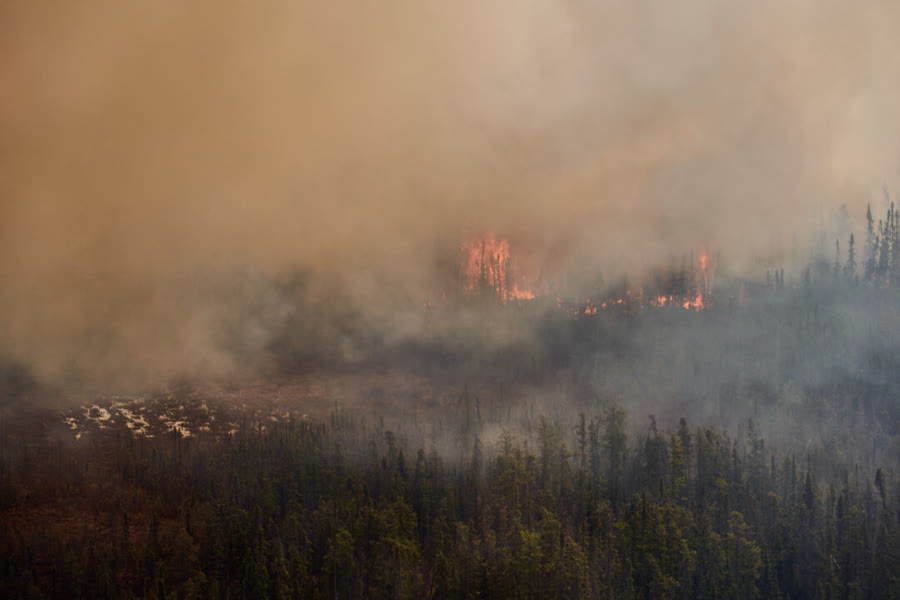Over 600 Residents in Manitoba Can Return Home as Cooler Weather and Rain Assist Firefighters.
Last week, residents of Cranberry Portage and several other communities in northwest Manitoba were forced to evacuate their homes due to an approaching wildfire that was less than two kilometers away from the community. The fire, which posed a significant threat, has prompted over 600 people to flee the area, seeking refuge from the rapidly advancing flames.
The Manitoba Wildlife Service (MWS) has announced that these evacuees can begin returning home on Sunday morning, thanks to the efforts of firefighters who have managed to contain the fire, as well as the arrival of cooler weather and some much-needed rain. The MWS is advising residents to ensure they have sufficient fuel before leaving the nearby city of The Pas, anticipating potential delays due to the large number of people returning home and the ongoing work in the area.
In addition to the situation in Manitoba, there has been some improvement regarding a massive out-of-control wildfire near Fort McMurray in northern Alberta. On May 14, around 6,000 Albertans had to flee their homes after an evacuation order was issued. Although the fire remains classified as “out of control,” it is currently just over five kilometers away from Fort McMurray’s landfill.
While many residents have been forced to leave their homes, Alberta Wildfire has clarified that only four areas within Fort McMurray have experienced evacuations so far, with the majority of the population continuing their daily routines and remaining in their homes. There is currently no indication as to when evacuees can return to their homes, with the cause of the fire still under investigation, although officials have stated that many wildfires this year have been human-caused.
The situation has also shown some signs of improvement for approximately 4,700 people who were evacuated from the Fort Nelson region in northeast British Columbia (B.C. Emergency Management Minister Bowinn Ma has cautioned that while the area has experienced some rain over the past two days and lower overnight temperatures, which have reduced the risk of spread, “we are not out of the woods.
According to Ms. Ma, the Parker Lake wildfire is located just one kilometer away from Fort Nelson and has consumed about 12,300 hectares. She emphasized that it is too early to provide any indication of when evacuees can return home, as there is not enough rain forecasted to alleviate prolonged drought conditions or naturally extinguish the fires.
Ms. Ma also confirmed that some structures were lost in the first two days of the fire, which started on May 10, but none have been lost since then. British Columbia (BC) Wildfire Service Director of Operations Cliff Chapman explained that drought conditions in northeastern B.C. remain significant, noting that they are experiencing a fuel drought not seen in years, if ever, in the province.
They are extremely dry,” Mr. Chapman said. We are experiencing a fuel drought that we haven’t seen in a long time, if ever, in British Columbia.” He added that the Prince George region in northern B.C., including Fort Nelson, has been particularly dry, pointing to the ongoing record fire season in 2023.
Most of the hectares that we lost last year because of wildfires were in Prince George (region),” Mr. Chapman estimated, with over two million of the nearly three million hectares lost to wildfires occurring in the region. Ms. Ma noted that some fires in the region smoldered over the winter and flared up again, such as the Patry Creek wildfire, located approximately 20 kilometers north of Fort Nelson.
As the May long weekend approaches, Minister Bowinn Ma advises against visiting the area around Fort Nelson, urging residents to explore other parts of British Columbia that remain unaffected by wildfires. She emphasizes that the province is large and has plenty of other areas worth exploring.

